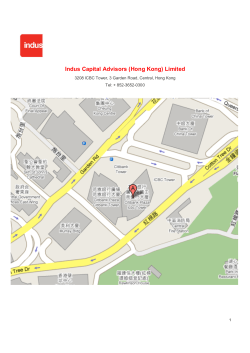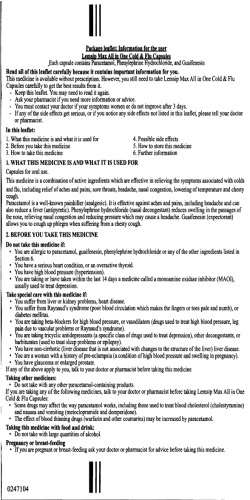
Fig. 2. CFD results of Different OC shapes AERODYNAMIC AND
46th Lunar and Planetary Science Conference (2015) 2833.pdf AERODYNAMIC AND ENGINEERING DESIGN OF A 1.5 SECONDS HIGH QUALITY MIRCROGRAVITY DROP TOWER FACILITY. V. Belser1,2, J. Breuninger1, R. Laufer2,1, K. Boehm3,2, M. Dropmann2,1, G. Herdrich1,2, T. Hyde2 and H.-P. Röser1, 1Institute of Space Systems, University of Stuttgart, Pfaffenwaldring 29, 70569 Stuttgart, Germany, Email: [email protected], 2Center for Astrophysics, Space Physics and Engineering Research, Baylor University, One Bear Place #97310, Waco, TX 76798, 3Institute of Aerospace Engineering, Technical University of Dresden, Marschner Strasse 32, 01062 Dresden, Germany Introduction: Microgravity is the condition of a body in free fall with a lack of external forces acting on it. It results in a stress and strain free state, in which especially fluids show an altered behavior. Studying this altered behavior can lead to a better understanding on what effect gravity has on fluids. Therefore conducting experiments under the condition of microgravity is promising for research in space science, planetary science, biology, fluid mechanics, combustion and material science [1]. Microgravity experiment platforms range in experiment size, duration and quality of microgravity. The latter is the difference in acceleration of the platform to the gravitational acceleration g and according to Boehm in [2] it should reach 10-5 and 10-6 g in order to satisfy the requirements of most microgravity experiments. Common research platforms include orbital spacecraft, airplanes undergoing parabolic flight maneuvers and drop towers. The last-mentioned offer good quality of microgravity combined with adequate payload masses and the advantage of virtually unlimited repeatability under same experiment conditions, at a low cost. In a collaboration between the Institute of Space Systems (IRS) at the University of Stuttgart, a new drop tower facility is currently under development at the Center for Astrophysics, Space Physics and Engineering Research (CASPER) at Baylor University (BU) with the design parameters of at least 1.5 seconds drop duration while providing a quality of at least 10-5 g. So far this has only been achieved in vacuum drop tower facilities in which the capsule experiences virtually no IC: Inner capsule, OC: Outer capsule aerodynamic drag during the drop (an unwanted external force). Since this design comes at high costs, another common drop tower design concept, which does not require an evacuated drop shaft, was chosen. In this design a dual capsule system (figure 1) is Fig. 1. Dual Capsule Design used, in which the capsule containing the experiment (inner capsule) is protected from aerodynamic drag by dropping a drag shield (or outer capsule) in front of it. Feasibility study: In order to show the general feasibility of this drop tower design concept, a practical small scale study was conducted [2] which proves that the quality of microgravity could be achieved with this design option, by implementing aerodynamic improvements for the shape and dimensions of both capsule. Additionally initial tests provided valuable information for the design. Aerodynamic Optimization: Other drop tower facilities featuring this design have so far not been able to provide the required quality of microgravity at drop durations of approximately 2 seconds [3]. Therefore, as a first step of the drop tower development process, the dual capsule design and drop shaft had to be aerodynamically optimized. This was done by optimizing the shape of the outer the capsule and the exact dimensions of both capsules (figure 1) with the aid of computational fluid dynamics (CFD) simulations (figure 2). The simulations demonstrated that the quality of microgravity can be met with an optimized capsule design. The results were verified by testing a scaled model in a wind tunnel and with an experiment setup in which some forces experienced during the drop could be measured without actually dropping a full scale dual capsule system. Furthermore, the aerodynamic influence of the drop shaft was studied leading to the concept design seen in figure 3. Fig. 2. CFD results of Different OC shapes 46th Lunar and Planetary Science Conference (2015) 2833.pdf Deceleration Device: The deceleration device has the function to decelerate both capsules from the highest (impact) velocity to standstill. The research by Breuninger in [3] shows two eligible design options for such a device. A study has been conducted in order to evaluate the best design for the BU drop tower under the consideration of the aspects costs, safety, maintenance, reliability and operational functionality. Release Mechanism: Beside the capsules it selves another key component affecting the quality of microgravity is the device for capsule release. Initial disturbances caused by the release device were observed at other drop tower facilities [4], which shorten the drop time under the desired quality of at least 10-5 g. To keep the release low of initial disturbances currently an investigation of possible design options is ongoing. References: [1] H. Dittus (1991) Endeavour, Volume 15, Issue 2, Pages 72-78. [2] K. Boehm (2013), Design of a 2Second Drop Tower Facility for Small Satellite Technology Demonstration and Microgravity Research, 9th IAA Symposium on Small Satellites for Earth Observation, Berlin. [3] J. Breuninger (2014), Design of a 1.5 Seconds High Quality Micro Gravity Drop Tower Facility, Bachelor Thesis, University of Stuttgart. [4] European Users Guide to Low Gravity Platforms, Chapter 3, Pages 1-22, European Space Agency. Fig. 3. Concept of Drop Shaft Design
© Copyright 2025














